Batgirl - Gay Icon?
By J. Skyler
August 10, 2012 - 00:06
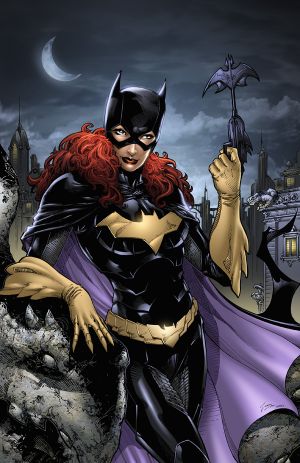 |
An in-depth analysis concerning Barbara Gordon can’t be discussed without the Women’s Liberation Movement, which had only begun to seriously permeate public consciousness at the time of her introduction. Barbara Gordon is arguably the greatest feminist icon in comic books, second only to Wonder Woman—and even then I will argue she deserves top billing over the Amazing Amazon. While Wonder Woman epitomizes fantasy and mythology, Barbara Gordon’s character and history are grounded in reality, which irrefutably links her to feminist theory to a greater degree than the vast majority of female superheroes.
The struggle for gender equality is the hallmark of all feminism and the global Women’s Rights Movement. The resistance is quite perplexing, because when women challenge their roles in society that are purely cultural in context, such as a woman’s place being in the home, they are berated for undermining the family dynamic, an idea that adamantly rebuffed by feminists and sociologists alike. Ironically, when women fight for the few aspects of their physical anatomy that actually make them female—such as access to birth control, safe and legal abortion, and other vital services that are crucial to women’s health—opponents are completely dismissive. Furthermore, they continue to unapologetically accuse women of dissolving family values. In other words, women should not have the intellectual curiosity or courage to challenge cultural roles that are dictated to them, nor should they take into consideration the only legitimate biological differences that make them different from men.
Enter Barbara Gordon in 1967. Allow me to rephrase—enter Dr. Barbara Gordon Ph.D., in 1967. I emphasize her doctorate because it’s such a fundamental aspect of her character. In the 1950s, it was commonplace for women to attend college for the sole reason of earning their “M.R.S. degree”, a playful yet historically disturbing coin of phrase which meant they were seeking husbands, not higher learning. The authors of Family Life in 20th-Century America (2007) note that “many college women married and got pregnant before they finished school.” Additionally, they also point out that those who did finish college did so exclusively to further their husband’s careers. Rather than entering the workforce themselves, “their degrees would be put to use as they helped their husbands entertain business associates, severed as interesting companions to their husbands, and raised intelligent, secure children.” Thus, a decade later, Barbara Gordon’s doctorate in library science represented a fundamental shift in attitude for women’s education. She didn’t toil for years on end for a Doctor of Philosophy to copulate and reproduce; she earned her degree to better herself.
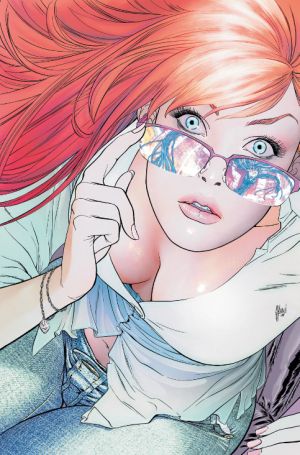 |
I’ve mentioned before how Gordon’s persona is much more open and inviting than Bruce Wayne’s, and her formal education is a key focal point. While both characters are certifiable geniuses, Wayne’s lack of involvement in formal academics is rarely mentioned. We are told in various stories that he traveled the world learning a variety of subject and techniques, both physical and mental, from some of the greatest minds and masters on earth, but I suspect the reason Bruce Wayne is never attributed a specific degree in any one field from any particular university is because it would conflict his “wild playboy” persona, which has been so crucial in refuting any suspicion of leading a double life. In contrast, Gordon’s status as an intellectual is seen as integral part of her identity, to both the reader and more importantly to the fictional world around her. Furthermore, she actually uses gender stereotyping to her advantage: what would an educated young woman be doing brawling with hardened criminals in the dead of night?
One of the understated revelations of Barbara Gordon’s Batgirl is how she defies the stereotypical objectification of women by being a full-clothed costumed crime fighter. Off-hand, I can’t think of a single male superhero who runs around half-naked, but when you take into consideration Supergirl’s mini-skirt, Wonder Woman’s bathing suit, Black Canary and Zatanna’s fishnet stockings, and Power Girl’s sole claim to fame being her ridiculously large breasts, Batgirl is one of a regrettably few super heroines who’s physical attributes are not the focal point of her cultural relativity. That’s not to say Batgirl is absolved of sexuality altogether (far from it), but she is one of a handful of female characters whose sexuality is appropriately regulated to a backdrop to her overall persona.
In her introductory story, “The Million Dollar Debut of Batgirl”, Gordon is on her way to a policeman’s ball dressed as a female version of Batman. It is only after she inadvertently prevents the villain Killer Moth from kidnaping Bruce Wayne that she believes she could become an effective crimefighter. This represents yet another vital aspect of her character: altruistic motivation. Unlike Batman and Robin, Batgirl does not seek revenge for the murder of a blood relative, nor is she burdened with the ethical responsibility of limitless power like Superman, Wonder Woman or Spider-Man. Saving lives is a choice she made as an ordinary individual. This choice makes her one of the most grounded characters in comic books because it is the same choice everyday heroes, such as firefighters, police officers, military soldiers, and good Samaritans make.
Nonetheless, her foray into the criminal underworld is immediately stifled by Batman, and even boy wonder Robin writes her off stating “we can’t worry ourselves about a girl.” Rabid fans of Batman often argue neither he nor Robin we’re being sexist, but assumed Batgirl did not have the same training they possessed. However, in their attempt to discourage her, they specifically question her gender, not her expertise. One must wonder how different their reaction might have been had yet another male vigilante sprang up in Gotham. I’m sure both of them would have been just as territorial, but I doubt either would have been as dismissive. Moreover, if Batman in particular was so concerned with martial arts prowess, the fact that he would take in a 9-12 year old child like Dick Grayson and send him onto the battlefield, only to turn around a few years later and take one glance at the adult Barbara Gordon and say no, this won’t do defies all logic.
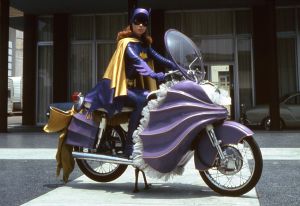 |
Another example of gender preference concerning Batgirl is contrasting her with her father, police commissioner James Gordon. He does not possess the intellectual or technical genius of his daughter or Batman, but is nonetheless an excellent detective. He is nowhere near the level of martial arts prowess of either of them, but in every medium of the Batman franchise, he has always been depicted as being able to hold his own in a fight at the very least. He has grown to become one of the most respected characters of the franchise, and yet for some reason when people think Batgirl, they think incompetent. This idea that if she isn’t the deadliest woman on the planet she shouldn’t be in the costume is the fundamental flaw in arguments decrying Batgirl as an inept variation of Batman. Nonetheless, it is the very mentality than drove DC editorial to retire the character. Gina Renée Misiroglu wrote in The Superhero Book: The Ultimate Encyclopedia Of Comic-Book Icons And Hollywood Heroes (2004) that “as Batman comic books grew dimmer throughout the 1970s and 1980s, Batgirl’s existence weakened Batman’s, and Barbara Gordon hung up her cowl, despite being merchandised by a variety of toy manufacturers, still craving that girl demographic.” Batgirl wasn’t alone of course. The 1980s saw a full assault on the female superheroes of DC Comics. Female variations of male characters such as Supergirl were given the axe, while a number of independent heroines such as Black Canary were tortured, mutilated or depowered. It’s interesting that male superheroes were enthusiastically revamped to match the darker and much more psychologically complex tone of the times, while updating female characters was apparently too much of a task to attempt. What’s troubling about Batgirl in particular is the fact she was depicted as losing her confidence before abandoning the role. How morbidly poetic that the one female character who so closely represented Women’s Liberation lost her convictions under the influence of a male dominated industry. What is even more damning is the reason she lost her confidence: she did not possess superpowers. It’s a chilling reprimand to all of the everyday heroes I’ve mentioned thus far, that all they do is in vain because they cannot literally move mountains.
The final insult in Batgirl’s history would be the release of Alan Moore’s Batman: The Killing Joke in 1988. The character had retired in Barbara Randall’s Batgirl Special #1 released earlier that year and since DC had no future plans for her, Moore asked editor Len Wein if he could cripple her. His response? According to Shannon Cochran of Bitch magazine, Moore stated he was told, “[y]eah, okay, cripple the bitch.” The paralysis of Barbara Gordon has attracted as much academic analysis as Batman’s psychology, but it can all be summarized by Jeffrey A. Brown in Dangerous Curves: Action Heroines, Gender, Fetishism, and Popular Culture (2011) who wrote: “The inherent misogyny of the male-dominated comic book industry has been highly criticized as of late for not just the eroticization of superheroines but also for the relatively unequal violence they are subjected to.” Although editor Kim Yale and Suicide Squad writer John Ostrander saved Gordon from oblivion by recreating her as the computer expert, hacker and intelligence operative Oracle, the fact her injury became permanent was also a consistent reminder of gender inequality for a number of fans—including Yvonne Craig, who famously portrayed her in the 1960s Batman television series. Craig once said “I meet young women who say Batgirl was their role model ... They say it’s because it was the first time they ever felt girls could do the same things guys could do, and sometimes better. I think that’s lovely." I have to say, she was mine too.
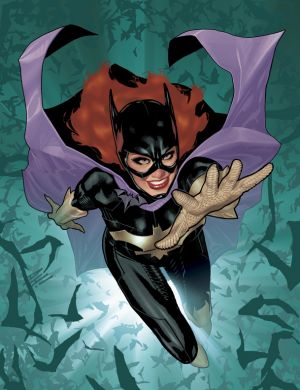 |
Part of the reason it was so difficult for the Gay Rights Movement to find its footing is because discrimination based on sexual orientation had been so deeply ingrained that it was difficult for people even communicate with one another without a crippling fear of persecution. In 2012, it’s easy to forget that at one time homosexuality was deemed a mental disorder and people suspected of or caught behaving in homosexual “activity” could at the very least, be placed in prison or at the very worst, be committed to a psychiatric ward and forcibly lobotomized. Robert Crooks and Karla Baur wrote in Our Sexuality (2010) that “[t]he medical and psychological professionals have used drastic treatments in attempting to cure the ‘illness’ of homosexuality. Surgical procedures such as castration were performed in the 1800s. As of late 1951, lobotomy (surgery that severs nerve fibers in the frontal lobe of the brain) was performed as a cure for homosexuality.” Since 1973, all psychological, psychiatric and medical associations have stated that homosexuality is in fact not a mental illness and should not be treated as such. Nonetheless, one can understand that remaining closeted during that time period ensured one’s safety. Women and African Americans faced impossible odds during the early half of the 20th century, but the law never permitted surgical procedures to be forced on individuals, nor allotted for someone to be registered as a sex offender on the sole bases of ethnicity or gender. Women and ethnic minorities, at the very least, could speak and organize publicly without being immediately imprisoned or committed; members of the LGBT community could not (though that’s not to say false imprisonment and police brutality weren’t rampant). While people such as Martin Luther King Jr., Malcolm X or Susan B. Anthony represented the indomitable spirit of equality under law that millions could follow, no such beacon of hope existed for LGBT people (though in later decades we would discover people such as Bayard Rustin and Harvey Milk). That brings us to the topic of why gay icons are so important. Without strong, open and identifiable LGBT people to look to for guidance, members of our community were forced to look for prominent figures in society whose life story in some way, shape or form mirrored our own. Gay men in particular often look to prominent women who have overcome the odds, throwing off the shackles of male oppression in their homes as well as in the work place. As prisoners of the closet, they model themselves after heroic figures whose larger-than-life personas are far too grand for the world to ignore. For me, that figure was Batgirl.
I am a transgender woman, meaning that I am a genetic male (xy) whose gender identity or self-perceived sense of self is female. Since I have not chosen to undergo sex reassignment surgery (transsexual is a medical term indicating whether an individual is in the pre-operative or post-operative stage of SRS, whereas transgender is used to describe gender identity regardless of one’s surgical status) and since I am exclusively attracted to men, it’s natural to look at me and assume I am simply a gay male. It doesn’t bother me because I am genetically male and I am exclusively attracted to men, but if I were post-operative or living as a woman, calling me a gay man at that point would be considered highly derogatory. It also illustrates the fact that people think of transgender individuals in terms of post-operative status instead of understanding gender identity as a life-long attribute. As I child, I was aware of the fact that I saw myself as a girl at age 4. I knew I was different from other children, even though I didn’t understand why at the time. I modeled myself after women I loved, my mother first and foremost. Being a fanatical lover of animation, fantasy and superheroes, fictional characters were some of my earliest role models and continue to be to this day. I remember being 5 or 6 years old flipping through the channels and coming across the opening credits of the 1960s Batman television series. I had seen bits and pieces of the show beforehand, but it never sparked an interest. Just as I was about to turn the channel, Batgirl swung across the screen on the line of her grappling hook, kicking a villain in the chest. At that moment, time stood still. There was a GIRL who fought the bad guys as easily as the boys did! From that day forward, Batgirl was a model of femininity, intelligence and righteous fury that continues to drive me. No one in my family collected comic books, so as a child my exposure to her character was limited to reruns of the third season of Batman as well as the animated television series The Batman/Superman Hour and The New Adventures of Batman. I was 8 years old when Batman: The Animated Series premiered on Fox Kids in 1992 and from the very first episode, I waited for Batgirl to emerge. It was thrilling to see her on screen in the darker and more mature tone of the post-Tim Burton era of the franchise. When I turned 16 and began working my first job, I wanted to start collecting comic books. One can imagine my dismay when I walked into my first comic book shop only to find that my favorite character had been paralyzed since I was 4 years old. I took it personally, far more personally than anyone should concern themselves with a fictional character, but I honestly felt betrayed—as if a vital aspect of my childhood had been taken from me, without my knowledge or consent. In essence, the Joker’s assault on Barbara Gordon is reminiscent of the days when members of my community were specifically targeted for mutilation under the guise of therapy. I felt violated.
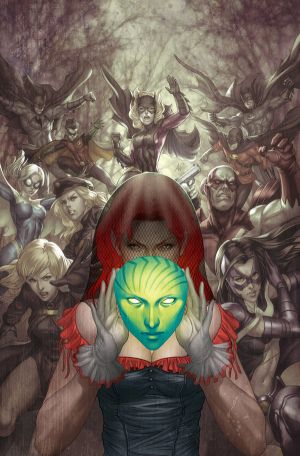 |
In light of the fact that Batgirl made a natural recovery as opposed to using pseudoscience, I continue to see her as an advocate for those living with disabilities. In the same way the actions of whites were fundamental in the abolition of slavery, in the same way they were critical in tearing down segregation laws, in the same way men have stood on the front lines of Women’s Rights and in the same way it is crucial to have heterosexuals advocating on behalf of the LGBT community, Batgirl continues to represent an overlooked minority in comic book readership. Whether we see her as an advocate for the disabled, a role model for LGBT people or as the greatest feminist in comics, Batgirl—the Dark Damsel—is undoubtedly an icon.
Follow me on Twitter @jskylerinc
|
|
Related Articles:
Review: Batgirl #37
Review: Batgirl #36
Review: Batgirl #35
Review: Batgirl #34
Review: Batgirl #33
Review: Batgirl #32
Review: Batgirl #31
Review: Batgirl #30
Review: Batgirl #29
Review: Batgirl #28




